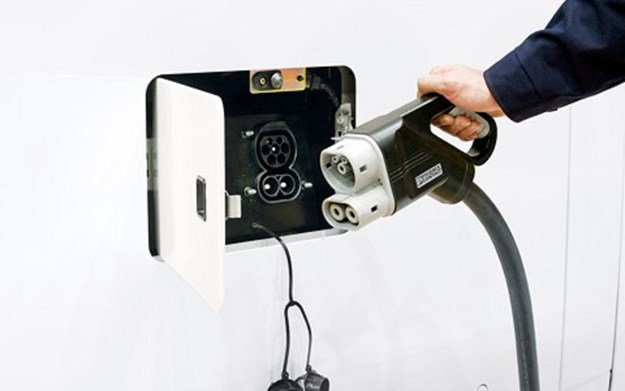EXCLUSIVE: Supplying electric buses with green energy is less expensive than many calculate it to be, according to an e-vehicle charging expert.
Electric vehicles aren’t just an exciting what-if or even a promising prospect; they are the inevitable future of transport, says Toby Roxburgh, managing director of Electromotiv.
Electromotiv is a partnership of transport, energy, procurement and financing professionals, it states. Backed by a trust with access to AUD$500 million in funding to work towards a sustainable, clean future it says it’s, “… passionate about transitioning the way people and goods transport by decarbonising the transport sector, one fleet at a time.”
Almost half a million buses in China – nearly 20 per cent of its national fleet – are already electric and in 2017 about 90 per cent of all new urban buses sold in that country were electric, confirms Roxburgh.
In Europe, half of all new buses sold will be electric by 2030, according to Swiss multinational investment bank UBS. The 2019 Electric Vehicle Outlook by Bloomberg NEF predicts that in the main markets of China, Europe and the United States electric buses will, “…hold 81 per cent of municipal bus sales by 2040.”
Electric is here and electric ascendancy is just around the corner, Roxburgh says.
“Australia, though – a wealthy country with bus networks in every major city – is behind,” he explained.
“In fact, where Asia, Europe and America are hurrying ahead Australia has barely got out of first gear.”
Asked what was holding Australia back, in terms of charging EVs cost-effectively, Roxburgh said: “A difference between perception and reality.”
“Understandably, leaders in the Australian bus industry – just like leaders in any market – don’t like making bad decisions. If they see risk, they baulk,” he added.
“Why would electric be a bad or even a risky decision for those in bus procurement decision-making positions? Well, here’s where there’s a huge, and growing, gap between what people perceive and the facts of the matter.
“The perception is that while it might work in Europe or China, in Australia it’s too costly, it’s too uncertain and the ‘We’ll stick with what we know’ factor is too alluring.
“The reality, however, is that none of these judgements are any longer true,” he said.
TRUE COST AND RISK
“In my dealings with leaders in the bus industry, I’ve found that a lot of myths about electric buses persist,” explained Roxburgh.
– Myth 1: Batteries make the whole exercise too expensive
“Ten years ago batteries made most electric vehicles cost prohibitive. Bloomberg NEF reports that ‘Since 2010, the average cost of lithium-ion batteries per kilowatt-hour has fallen by 85 per cent on a mixture of manufacturing economies of scale and technology improvements.’ That cost will keep falling,” said Roxburgh.
“They’re also much more robust than they once were. A battery that lasts four years is, of course, a huge problem for an operator with a bus that will last 15 or 20. But today a battery will last for more than a decade.
That’s not to say batteries are now necessarily ‘cheap’, but operators don’t have to buy outright.
“They can lease batteries to defer the initial outlay and then get absolute certainty from a monthly or per-kilometre charge. They can also extend warranties by up to 20 years,” he said.
– Myth 2: Electric infrastructure is too risky
“Infrastructure may have been a risky proposition five years ago, but not anymore,” stated Roxburgh.
“Highly sophisticated charging stations – which might be installed along a street, at the end of a route, or at a depot – are now ready to go in Australia.
“One of the (very few) advantages of being electric laggards is it means others have had years to rigorously test and prove this technology. What comes to us now isn’t experimental, it’s ultra-reliable.
“Charging stations can be applied in infinite combinations to suit a route, a city and an operator’s particular situation,” he said.
– Myth 3: A diesel is just cheaper
“Diesel buses are cheaper” is kind of the umbrella myth – the big one. It’s simply no longer true,” Roxburgh adamantly stated.
“Yes, the initial cost of the bus will be considerably different. But…
Electricity is cheaper than diesel on a per-kilometre basis. And there are companies who, right now in Australia, will sell operators 100 per cent renewable energy at wholesale prices.
“Then there’s the fact that an electric bus has far fewer ‘moving parts’ than a diesel. It’s much easier and less expensive to maintain.
“In modelling we did recently for an Australian state government, we estimated savings of 20 per cent compared with diesel. And, as battery and renewal energy prices continue their rapid descent, that saving is only going to grow larger,” he explained.
AVERSION TO ELECTRIC
According to Roxburgh, it’s easy to see what’s held back operators, governments and decision makers from considering electric [vehicles] in the past. The imperative not to make a bad decision is strong, he says.
“But today, ignoring electric is ignoring the future of on-road public transport. And the leader who says ‘We can’t afford it’ in 2019 is working on old assumptions.”
“The truly bad decision for governments and operators as we approach 2020 is discounting electric out of hand,” he stated.



.jpeg)
.jpg)
.jpg)
.png)
-cropped.jpg)
